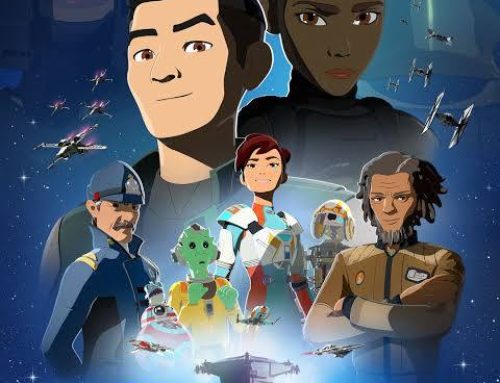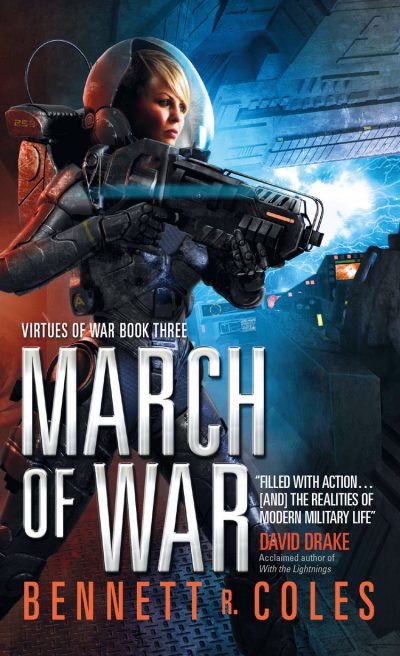Star Wars The Clone Wars – The 5 Best Story Arcs
Star Wars: The Clone Wars is peak Star Wars, and some of the best story-telling in the saga, but because of its animated format it’s still sadly underappreciated by the wider fandom. Clone Wars was the first attempt by Lucasfilm to play in the long-form, episodic method of story-telling and there were very few missteps over seven seasons of drama.
While certain stand-alone episodes are fantastic in their own right, Clone Wars was built mainly, especially after Season 1, in the 3-4 episode story arc, where the drama played out in two beats: the individual episode and the longer arc. A quick scan of Disney+ revealed no less than 22 story arcs in Clone Wars, and many of them stand out as memorable highlights in the series.
I’d like to examine what I think are the top 5 story arcs in Clone Wars, based on their overall combination of Character Drama, Action and Lore.
Honorable Mentions
Trust me, it was very hard to narrow my list down to the top 5, and many of the arcs that didn’t make my list were very close also-rans. So just before we get into the finalists, here are a few notable mentions.
The Tragedy of Mandalore (Season 5 Ep 14-16) for giving us another Maul-Kenobi confrontation, the awesome Maul-Visla lightsaber duel, the tragic death of Duchess Satine and, of course, the final battle between Darth Sidious and Maul/Savage. Epic stuff. (I probably should have made this article the Top 6…)
Mortis (Season 3 Ep 15-17) for diving deep into the nature of the Force and for showcasing Anakin’s personal journey toward the Dark Side.
Onderon (Season 5 Ep 2-5) for introducing Saw Gerrera and for giving us Ahsoka’s delightful struggles with romance.
Clovis (Season 6 Ep 5-7) for a James Bond-style snowy chase and that scene in Anakin’s room where Obi-Wan tries to talk about Anakin’s feelings for Padme and his for Satine.
Fives (Season 6 Ep 1-4) for showing just how close our heroes came to uncovering Order 66.
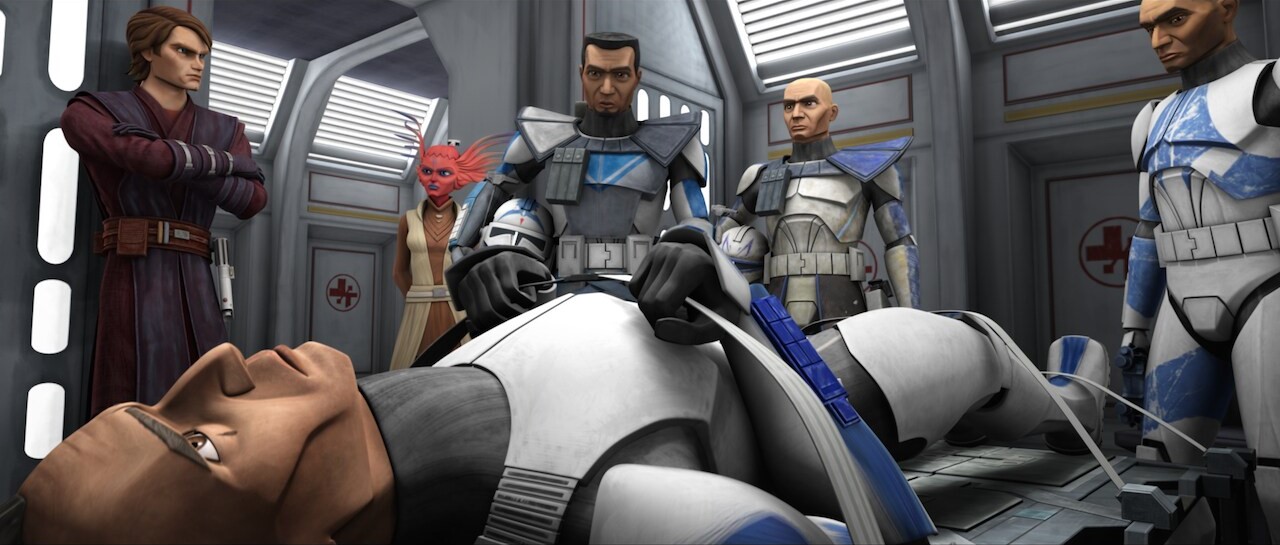
#5 – The Citadel (Season 3 Ep 18-20)
Episodes:
- The Citadel
- Counterattack
- Citadel Rescue
Republic prisoners have been captured and taken to the infamous prison known as the Citadel. These prisoner hold vital information about key space lanes and the Jedi mount a rescue operation. Anakin and Obi-Wan lead the mission, but Ahsoka disobeys orders and sneaks aboard, discovered only once the destination is reached and it’s too late to turn back.
The rescue takes many twists and turns, with our heroes breaking in, then getting captured, then breaking free again. After a brutal, failed attempt to escape by ship, the battle becomes a tense chase over hostile terrain. Our heroes are eventually rescued, but not before losing Jedi Master Piell and Arc Trooper Echo.
Character Drama
This arc demonstrates Ahsoka’s growing force of personality, which is a major aspect of her emerging character over 7 seasons. She disobeys Anakin’s order to stay behind, and then lies to him and says that Master Plo Koon had given her permission to come. It’s not her finest moment, frankly, but it shows the core of her natural independence and free-thinking that will eventually lead to her decision to leave the Jedi Order.
Action
The Citadel arc is full of action, from a sneaky insertion led by R2-D2, to a dangerous scaling of a sheer cliff, to plenty of fun blaster and lightsaber fighting within the prison itself. The battle at the landing pad is particularly savage, and notable because our heroes fail spectacularly in their goal. Not only do they not escape as planned, their ship is destroyed and Arc Trooper Echo is killed (or so we think, for 4 more seasons). The escape over the hostile landscape, being chased by alien hounds and making a last stand on an island surrounded by lava, is some of the most tense action in all of Star Wars.
Lore
This is the first time we meet the villain of the original Star Wars movie: Wilhuff Tarkin. Merely a captain at this point in the war, Tarkin is one of the two prisoners carrying the space lanes information and therefore is our Jedi heroes’ top priority to keep alive – despite his haughty attitude toward them and disdain for the clones. His conversations with Anakin in the tunnels are an early indication of Anakin’s fascist tendencies, building on his words to Padme in Attack of the Clones.
The loss of Echo was for years just a sad moment in the story, but with the rise of The Bad Batch this event has taken on huge significance in galactic lore. His capture nearly turned the tide of the war, as Separatist command droids could parse out Republic tactics based on Echo’s training and experience.
The method used to sneak the living creatures past the Citadel scans was to carbon-freeze everyone – an interesting tie to The Empire Strikes Back. It would certainly explain why Darth Vader thought to take Luke Skywalker to the Emperor this way, as he’d done it himself years before. He must have remembered that it hurt, though, because he decided to test it, on Captain Solo.
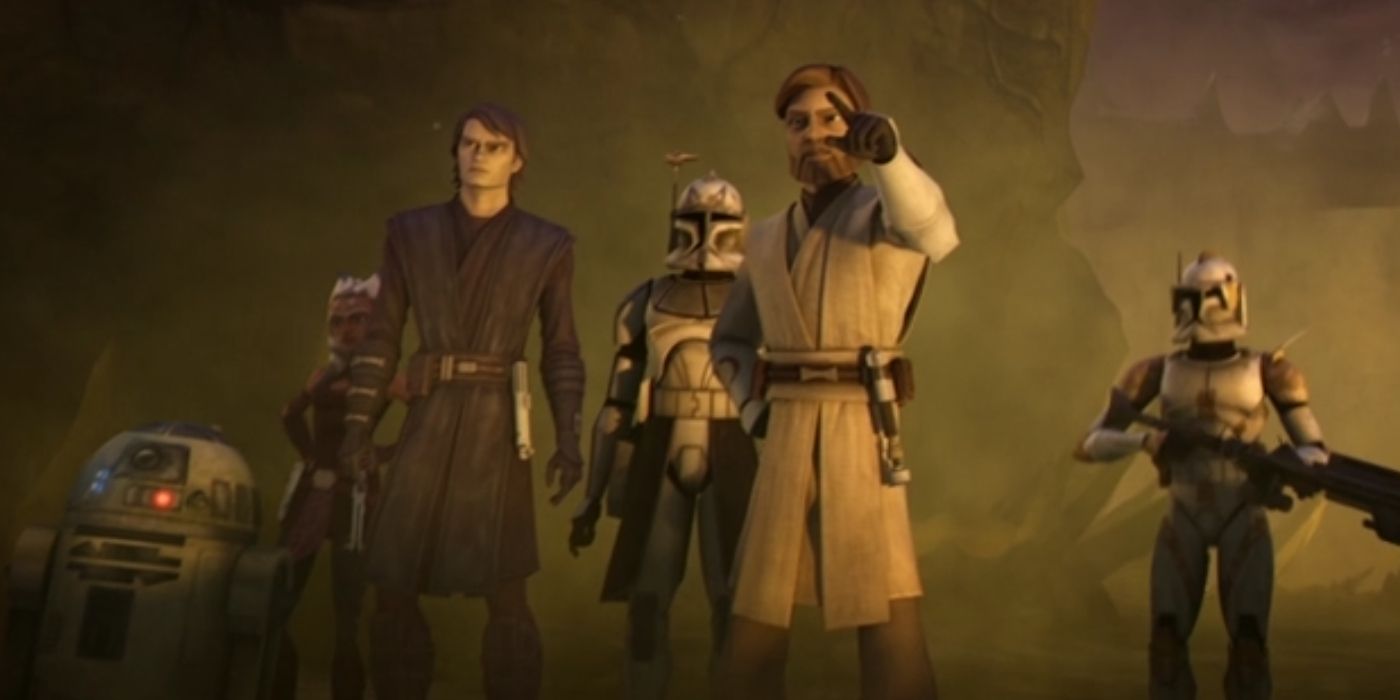
#4 – The Younglings (Season 5 Ep 6-9)
Episodes:
- The Gathering
- A Test of Strength
- Bound for Rescue
- A Necessary Bond
Not gonna lie, stories centered around kids aren’t usually my favorite. But this 4-episode story arc captures so much of what is awesome about Star Wars that it just has to be appreciated.
It begins with one of the best episodes in the saga for exploring the mystical nature of the Force. Yoda and Ahsoka take five younglings to the planet Ilum so that they can find the kyber crystals that will power their light sabers. The episode is a tour de force of fantasy, with each youngling having to conquer their own individual weakness in order to succeed. It’s a thrilling, touching episode.
The story then takes a dramatic turn as Ahsoka and the younglings head for home but are attacked by Hondo Ohnaka and his pirates. Before that, though, we’re introduced to the droid Huyang (voiced by the fabulous David Tennant of Doctor Who fame) who brings a sort of Harry Potter charm to the process of building light sabers. The pirate attack leads to another surprise: at the end of the episode, Ahsoka is captured.
The third episode follows the younglings as they follow the pirates and plan a rescue, as well as Ahsoka in captivity. In these scenes Hondo establishes himself as a truly dangerous opponent, a cutthroat criminal willing to sell “a female Jedi” to a willing buyer. The younglings mount a hilarious rescue by posing as circus performers and our heroes escape but under hot pursuit.
The final episode sees the arrival of Separatist forces to destroy Hondo’s base, led by none other than General Grievous. Our heroes are captured and forced to work with Hondo to escape, leading to another desperate chase and a one-on-one showdown between Ahsoka and Grievous. Through cooperation and a last-minute change of heart by Hondo, our heroes make it to safety aboard a Republic cruiser.
Character Drama
The first episode in this arc is full of character drama for the younglings – it’s a classic exploration of facing your fears that resonates well with the younger audience of Clone Wars but is still engaging enough for the adults.
The entire arc also shows character growth for Ahsoka, as we see her in a Jedi instructor role for the first time. She’s clearly growing up and taking on more responsibilities within the Temple, and it’s nice to see her away from battle and exploring other aspects of Jedi training.
Hondo Ohnaka is perhaps at his finest in this arc, still full of charm but unquestionably deadly beneath his smile. It’s nice to see the villains actually win for once, capturing Ahsoka for ransom even though they lose their original target of the younglings. Hondo is a brutal warlord who is always working for himself and will shift allegiances in a flash depending on the situation. But he also has a spark of humanity deep within, as evidenced by his ultimate decision to risk himself in order to rescue Ahsoka from certain death in her duel against Grievous.
Action
The battle for the Jedi ship during the pirate attack is more suspenseful at first, but when the fighting breaks out it’s Ahsoka at her finest. Hondo proves himself no slouch in combat either, and the final move to blow the airlock is startling for its brutality in a “kids show”. The chase scenes on Florrum are full of excitement and daring, and the shortened duel between Ahsoka and Grievous is a wonderful hint at what might have been.
Lore
The introduction of Ilum to Star Wars canon is a major piece of Jedi lore. The first two episodes in this arc are the first time the kyber crystals and their connection to light sabers are really explained, and the existence of Huyang is a wonderful addition to the saga – a highly specialized, extremely wise droid who has quietly served his essential purpose for thousands of years. The fact that he’s entirely unfazed by the pirate attack and his own dismemberment suggests that Huyang has seen it all before.
In later Star Wars, it’s revealed that Ilum was seized by the First Order. The tragedy is that this holy site for the Jedi is transformed into Starkiller Base, used to destroy Hosnian Prime, and then destroyed itself. Ahsoka and the younglings’ visit to Ilum was, although none of our heroes knew at the time, one of the very last of its kind.
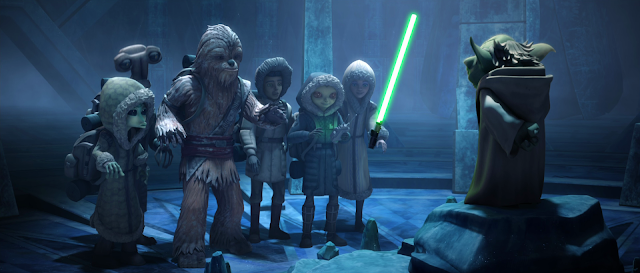
#3 – Return to Geonosis (Season 2 Ep 5-8)
Episodes:
- Landing at Point Rain
- Weapons Factory
- Legacy of Terror
- Brain Invaders
This 4-episode arc is one of the earliest examples of longer-form Clone Wars story-telling, and is still one of the finest. It has four episodes that stand on their own, which are enclosed in two sub-arcs that tell complete stories, which in turn are enveloped in a broader arc that ties everything together.
The first episode is generally considered to be the single greatest action sequence in all of Clone Wars. The landing at Point Rain is a non-stop, heart-pounding thrill ride reminiscent of the Allied landings against Nazi Germany. Everything goes wrong initially, but through grit and heroism the Republic forces gain a toehold on Geonosis thanks to Anakin, Ahsoka and Ki Adi Mundi, who makes his single best appearance in Star Wars.
The second episode sees Anakin and Ahsoka paired with Luminari Unduli and her Padawan Barriss Offee in an attempt to destroy a droid factory. The two padawans sneak into the complex and destroy it, but in so doing bring the entire mountain down on themselves. Anakin starts a desperate attempt to recover them and is ultimately successful.
The third episode follows Luminara Unduli as she hunts down the Geonosis leadership, only to get captured. Anakin and Obi-Wan rescue her in a dark and thrilling underground episode that is one of the earlier stabs at horror Clone Wars takes. The Geonosis queen unleashes mind worms that take control of clones and turn them on each other in a desperate battle to escape.
The final episode appears initially to be just a denouement, but the mind worms have survived and get aboard the ship carrying Ahsoka and Barriss back to safety. The episode descends into horror as one by one the characters are taken over by the worms, including Barriss herself. Ahsoka barely manages to survive, save Barriss and get the ship to safety.

Character Drama
The banter between Jedi shines a light on their general confidence and sunny outlook during these early days of the war. Anakin, Ahsoka, Obi-Wan and even Ki Adi Mundi joke about their droid kill counts, and Luminara chides Anakin for arguing with his padawan when there’s work to do. The tense exchange between Luminara and fellow masters Obi-Wan and Ki Adi Mundi reveals a lack of clarity regarding military chain of command, as the peacekeeper Jedi struggle to adapt to a wartime posture.
Anakin and Ahsoka are still fairly new in their relationship, and their strong personalities turn banter into actual arguing. Both of them are very young – arguably far too young to be carrying the responsibility they do – and the contrast between them and the disciplined Luminara and Barriss is obvious.
The loss of the padawans in the wreckage is an important moment for Anakin, as it reveals his propensity to making personal connections. Anakin is ready to redeploy all Republic forces in the area to conduct the recovery – anything to save his beloved padawan – which is in stark contrast to Luminara’s calm assessment of the likelihood that her padawan is lost. Luminara isn’t cold or unfeeling – she just knows how to manage her attachments.
This arc introduces Barriss and shows the first steps she and Ahsoka take toward being friends. It’s a nice development for Ahsoka and we get to see more of her real personality as she gets to just be a teenager and not a commander, at least for a little while.
Action
As I said before, the landing at Point Rain is one of the single best action sequences in all of Clone Wars, and it ranks even against the best of the Star Wars movie action scenes. Fast-paced, thrilling and with a real sense of danger, most of the episode keeps the viewer on the edge of their seat. There are some outstanding battle scenes in Clone Wars, but the landing at Point Rain sets the standard for them to live up to.
The mind worms introduce a new kind of action to Star Wars, delving unashamedly into the horror genre and giving viewers a different kind of thrill.
Lore
Geonosis culture is greatly expanded in these episodes, further building out the colorful adversaries introduced in Attack of the Clones. Elements of these episodes echo back powerfully in Rebels when the Ghost crew visits Geonosis decades later.
Barriss Offee is introduced organically as a new character who serves a tactical purpose but who also gives Ahsoka a chance to grow. She remains Ahsoka’s friend for three more seasons until she tragically turns against the Order. Barriss is a character every Ahsoka fan wants to know more about, and many would like to see their relationship explored further. Her story is carried on in Star Wars: Tales of the Empire, but there is still much more to learn about her.

#2 – Ahsoka Framed (Season 5 Ep 17-20)
Episodes:
- Sabotage
- The Jedi Who Knew Too Much
- To Catch a Jedi
- The Wrong Jedi
This 4-episode story arc is a master class in subtlety, each episode building – in a logical, self-contained way – toward an even bigger revelation at the end. It was for seven years the unexpected finale of Ahsoka’s participation in Clone Wars, and it remains one of the greatest tragic moments in all of Star Wars.
The arc begins innocently enough, with Anakin and Ahsoka surviving a fighter battle on Cato Neimoidia only to be summoned back to Coruscant to investigate a deadly bombing at the Jedi Temple. The investigation takes twists and turns, but they eventually uncover the guilty party and bring them to justice.
But, in the next episode the accused asks to speak with Ahsoka and reveals that there’s a greater conspiracy underway. She is mysteriously killed before she can reveal the full truth and Ahsoka finds herself framed not only for that murder but also for the murder of clone guards. She ends up on the run, pursued by Anakin, Rex and all her old friends, and after poignant words to Anakin makes her escape into the underworld.
And then, she meets up with former Sith assassin Asajj Ventress and together they investigate a clue provided by her friend Barriss that Ahsoka hopes might clear her name. Things only get worse, however, as Asajj turns on her and Ahsoka is captured by the Jedi and brought back to trial.
Ahsoka is expelled from the Jedi Order and forced to stand trial in a military court. Anakin is the only Jedi who still believes her and he does his own investigation, finding Asajj and learning who the true traitor is: Ahsoka’s best friend Barriss Offee. Anakin confronts Barriss, captures her and presents her to the court. Ahsoka is freed. The Jedi lamely apologize and offer her reinstatement in the Order.
But, in the final twist, Ahsoka feels betrayed and departs the Order, leaving everything – including Anakin – behind.

Character Drama
This arc focuses on Ahsoka as she navigates the confusion, uncertainty, fear and ultimate betrayal of this incident. She demonstrates both her strength and her compassion as she tries to find the truth and to avoid hurting anyone. Her loyalty to the Jedi and the Republic are rock-solid at the start of the arc, but this loyalty is pushed and pushed until it finally breaks, leaving Ahsoka with nothing but her own moral compass to guide her. The decision to turn her back on the Jedi isn’t made out of anger or bitterness, but a rather by a sad realization that it no longer offers what she needs. Her moral courage is evident throughout.
Anakin shows many of his strengths in this arc and while Star Wars fans all know that his attachments will lead to his downfall, in this case his instincts serve him well. His loyalty to Ahsoka is admirable, and his grief at her decision to leave is very believable.
The Jedi Council do not present well in this arc, revealing themselves to be conservative, close-minded and more interested in political consequences than taking care of one of their own. We can guess that the “non-unanimous decision” Yoda describes at Ahsoka’s Jedi trial means Plo Koon and Obi-Wan voted in her favor while Mace Windu, Ki Adi Mundi and the others voted against her – but even so this shows a lack of courage in Obi-Wan and Plo Koon in not fighting harder for justice.
Asajj Ventress has a fascinating role to play in this arc, the once uber-villain of the Clone Wars series now acting as a shadowy supporter to our favorite young padawan. She’s not exactly a “good guy” but her emotional journey is obviously underway.
And finally, Barriss. Always so proper and loyal as a Jedi padawan, her rebellion against the system is surprising, and her framing of Ahsoka is cruel. We wonder just how well we really knew this friend of Ahsoka’s – and how well Ahsoka knew her – and if we’re charitable we are forced to ask what would motivate such a dedicated Jedi student to turn so completely against her own. Barriss Offee represents an amazing opportunity to explore the complex politics and philosophy of the last days of the Republic – we’ve had a taste in Tales of the Empire, but I for one would love to see much, much more.
Action
The opening sequence of the arc, with Anakin and Ahsoka battling buzz droids, is great fun and it sets the tone for a high-flying episode. Of course, it’s all a diversion, and the rest of the episode transforms into a tense, film-noir style murder mystery.
The later episodes showcase Ahsoka’s fighting prowess as she escapes the prison, evades capture and ultimately crosses swords with Barriss Offee (disguised as Asajj Ventress).
The duel between Anakin and Barriss is one of the better light saber fights in Clone Wars, although I’m surprised at the restraint Anakin shows. Facing down the Jedi traitor who is trying to frame his own padawan, I’m surprised we don’t see a little more of the Dark Side emerging in his fighting style.
Lore
This arc is one of the seminal moments in Star Wars. It doesn’t support the lore so much as create a stanchion upon which the entire Ahsoka story rests. It lays bare the weakness of the Jedi Order. It reveals the moral complexity of the war and the Jedi role within it. It allows the treachery of Palpatine and his minions. It hints at the redemption of Asajj Ventress. It shows the compassion and determination in Anakin Skywalker. And it demonstrates that Ahsoka Tano is much more than just a Jedi.
This arc was the summation of 5 years of story-telling, and had Star Wars: The Clone Wars ended with it, that ending would have been tragically satisfying.
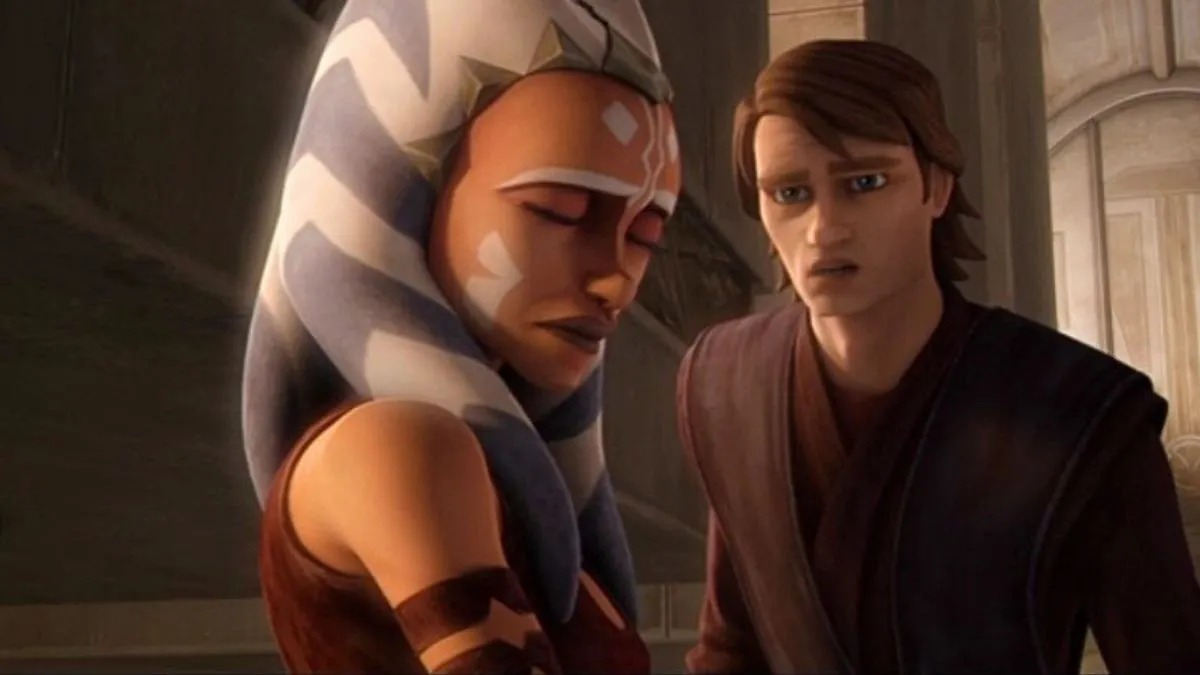
#1 – The Battle of Mandalore (Season 7 Ep 9-12)
Episodes:
- Old Friends Not Forgotten
- Phantom Apprentice
- Shattered
- Victory and Death
One might argue that this 4-episode arc, being the conclusion of the entire Clone Wars series, was naturally going to be the best. But I present as Exhibit A The Rise of Skywalker into evidence that just because something is the finale doesn’t guarantee it’s worthy.
Thankfully, Disney-era Star Wars delivered the ending we all wanted to Clone Wars – and they delivered in in spades. There is very little to critique in this stunning, movie-like, 4-episode arc. The animation is gorgeous, the writing is tight, the direction of both battle scenes and dramatic scenes is snappy and the plot gives us everything we needed to see.
The story begins… Well, the story begins with the Ahsoka theme playing over the Lucasfilm plate, followed by the original Star Wars music blasting forth as the Clone Wars logo fades backward – just to let us all know that we’re in for something special.
The story actually begins with Obi-Wan and Anakin fighting yet another battle in the war, but right away the tone is different. The action is over-the-top, the music is deeply reminiscent of the movies and Anakin is at the absolute top of his game. This is Anakin’s final moment as a Jedi Knight whole-heartedly serving the cause of good, and he delivers.
Soon after, the Jedi receive a mysterious message from Ahsoka, now working with Mandalorian nobility Bo-Katan Kryze, and a cool reunion ensues as they discuss plans to capture Maul on Mandalore. Anakin and Ahsoka share a tender moment, and she’s welcomed back by the clone troopers. But then Anakin is called away to rescue the Chancellor from General Grievous, kicking off the parallel events of Revenge of the Sith.
Ahsoka’s adventure continues to Mandalore, where she and some of the 501st fight alongside Bo-Katan and her warriors to wrest the planet from Maul and his Clan Visla supporters. Ahsoka and Maul eventually square off, and in a surprising turn Maul reveals just how much he knows about Sidious, Anakin and the coming storm. He invites Ahsoka to join him – and she actually considers it for a moment – but then he makes the mistake of criticizing Anakin, igniting Ahsoka’s protectiveness and both her light sabers.
After a dramatic battle Maul is captured and imprisoned in a Republic cruiser for transport to Coruscant. Ahsoka speaks to various Jedi, slipping in and around scenes from Revenge of the Sith, but is curiously isolated from Anakin. She sets off with Rex and the 501st with Maul imprisoned.
But then, Order 66 is executed. Ahsoka fights for her life, barely escaping into the bowels of the cruiser. She manages to figure out what went wrong, and after capturing Rex she removes his chip and regains his loyalty. She frees Maul as a distraction as she and Rex try to escape, but they find themselves facing off against hundreds of clones hell-bent on killing her and, by extension, Rex.
The only possible end is tragedy, and Ahsoka leaves her light sabers among the dead and disappears into the galaxy. All is lost. Evil has won. But we know where the story will go.
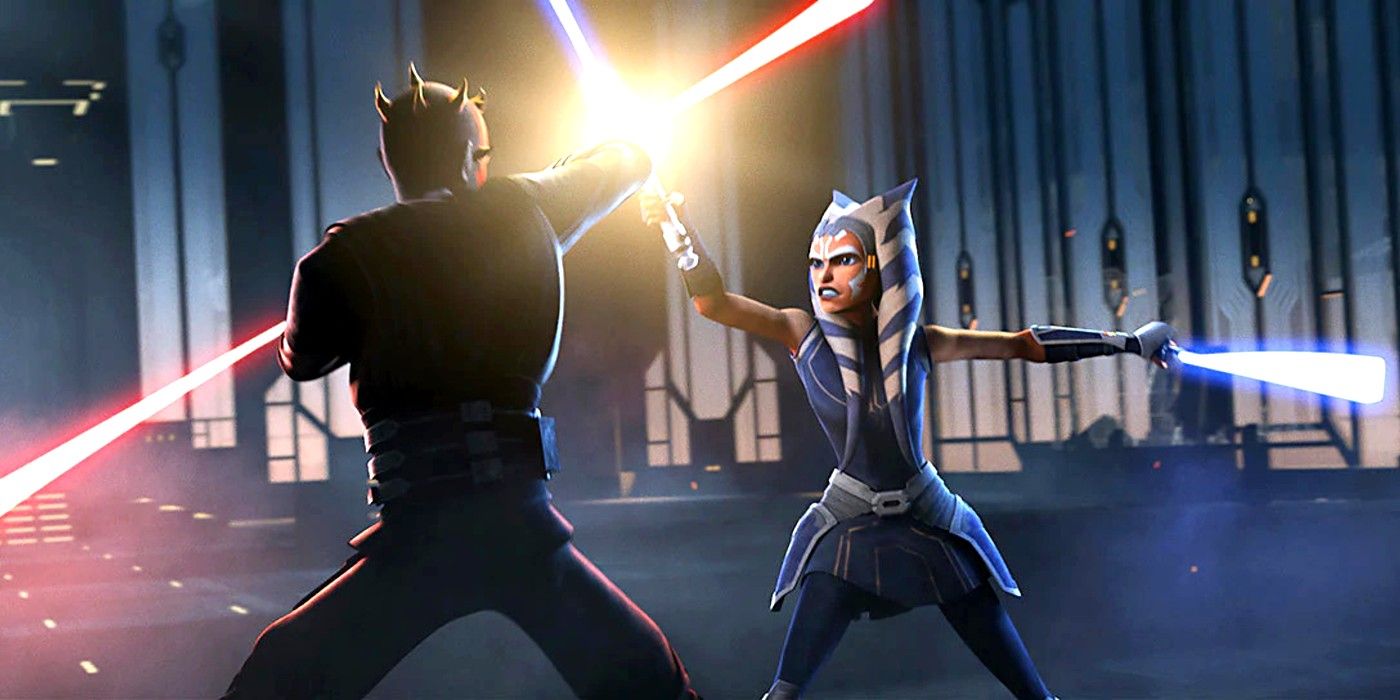
Character Drama
This is Ahsoka’s story, through and through, and in these four episodes we see how strong she’s become. No longer the snippy padawan we met in the early Clone Wars, she’s comfortable in who she is – not a Jedi, as she makes very clear to Mace Windu, but a Force-wielder of great power and strong morals. Freed from the Order, she’s become what the Jedi should be. We see her emotions, but she’s in control of them. We see her might, but she uses it only when necessary. She’s humble in the very best sense – she knows that she’s the most powerful person in the room, but she never, ever forces her will on anyone. At the end, she’s filled with grief but still has the strength to do what needs to be done, and to survive because she knows that she might be the galaxy’s only hope.
Her close connection to Rex is endearing. He’s always been like a grumpy uncle to her, but having been separated for a long time their relationship is now more as equals. They share a very intimate moment as she Force-prays over him, and their decision to fight together against all their brothers must have taken its toll on them both in the years afterward. Knowing now more of what they went through together, Ahsoka’s reaction when they’re reunited in Rebels – to throw her arms around him and bury her face in his shoulder – is that much more poignant.
To see Anakin just at the edges of Revenge of the Sith is heartbreaking. He loves Ahsoka: not in the way he loves Padme, but in a sisterly way that we as viewers have had the chance to see grow and develop over many years. The shock on his face when he first sees her hologram, and the almost awkward delight when he greets her in person, are both so human and so believable.
Action
Where to begin? This arc has some of the finest action sequences in Clone Wars, in no small part because of the advances in animation over the years. The bridge battle between Anakin, Obi-Wan and the Separatists is great fun, and Ahsoka’s initial landing on Mandalore is beautifully over the top – especially her light saber-wielding landing with the crouch and Black Widow head-raise, as a ship explodes behind her.
But special credit must go to the light saber duel between Ahsoka and Maul. Motion captured by Ray Park and Lauren Mary Kim, the duel is effortlessly fluid and dynamic, two masters of their craft facing off. This is arguably the best light saber duel in all of Star Wars, topped perhaps only by the Anakin/Obi-Wan matchup on Mustafar because of the dramatic lava setting.
Lore
This arc was the answer to questions that Star Wars fans had been asking for years. How did Ahsoka survive Order 66? Where was she during Revenge of the Sith? What happened to Rex? Did Ahsoka really meet Darth Maul on Mandalore? All our questions were answered, and I have yet to hear a complaint about how it was done. This arc was the perfect wrap-up to the Clone Wars story and its connection to the Prequel Trilogy.
There were other, nice links to lore peppered through the story. Ahsoka’s Force-prayer was a direct pull from Rogue One. When Maul is talking to his criminal underlings it’s clear that one of them is Dryden Vos from Solo. The early musical choices were a powerful tool to evoke feelings from A New Hope. And, of course, the close ties to Revenge of the Sith are a delight. As one pundit quipped, “Ahsoka was actually in Revenge of the Sith – they just cut the scene too early.”
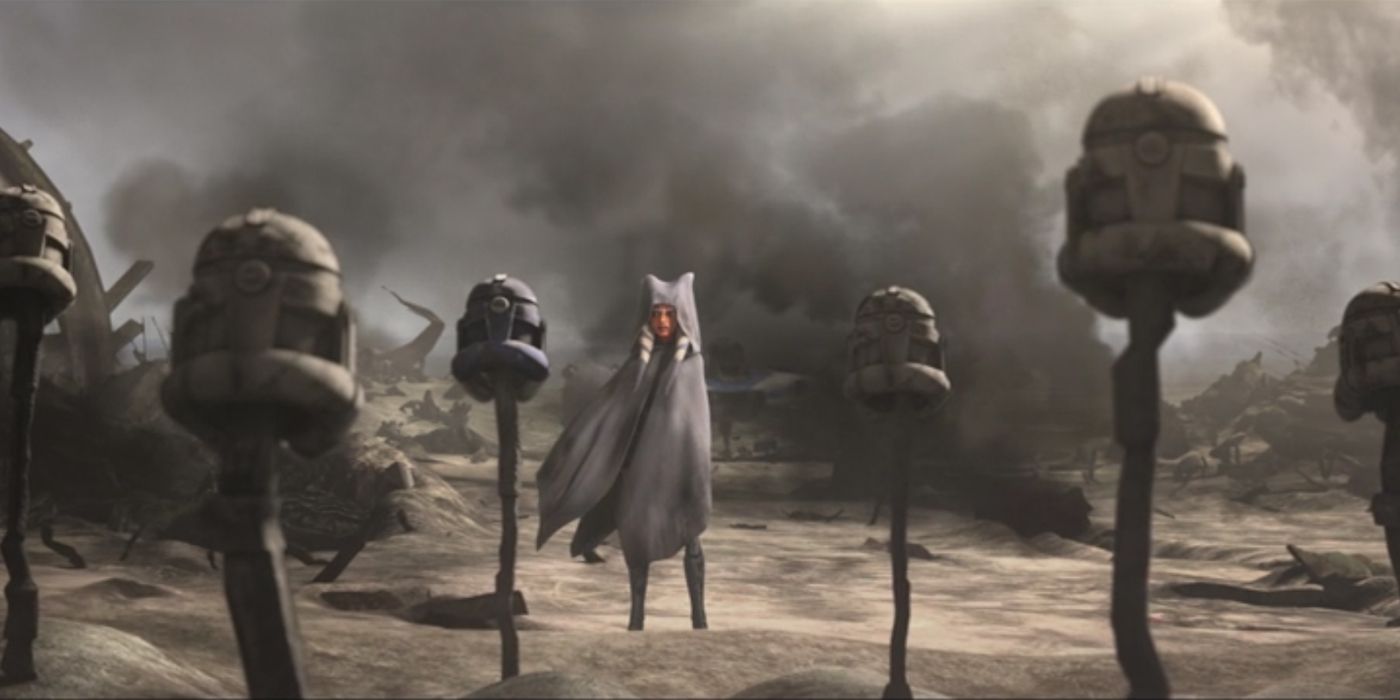
After years of waiting, the final act of Clone Wars Season 7 delivered on all fronts. It was a triumph of story-telling, but it stood on the shoulders of giants as I hope this exploration of Clone Wars story arcs has shown. If you aren’t familiar with the show, I encourage you to dive in.
Bennett R. Coles is an award-winning, best-selling author and ghostwriter of science fiction and space fantasy series. His newest novel, Light in the Abyss, is now available here.


